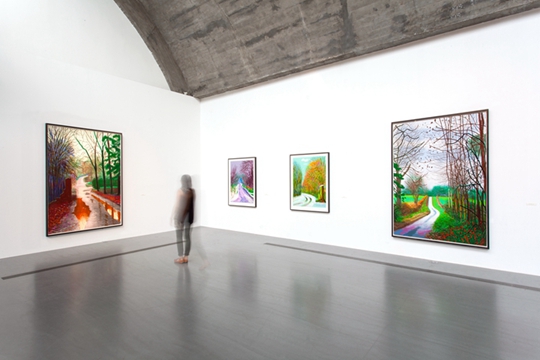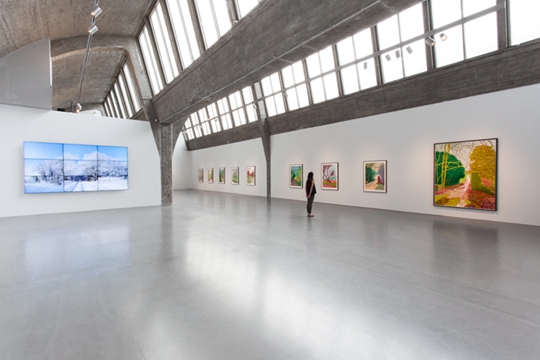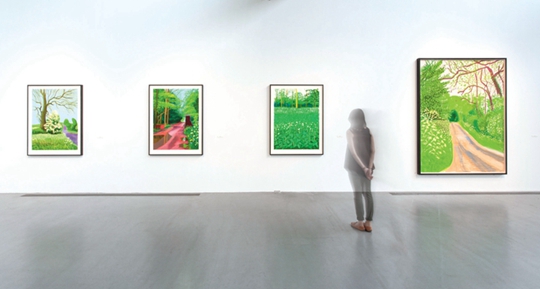DAVID HOCKNEY: THE ARRIVAL OF SPRING
| June 18, 2015 | Post In 2015年6月号

Courtesy Pace Beijing
Chinese artists have long been attracted to David Hockney’s work—painting, photography, visual technique, art history, and even his legendary life story. The story goes that the younger Liu Wei was a Hockney fan when he was still a student at the high school affiliated to the Central Academy of Fine Arts, and working painters like Gong Jian have taken an interest in his work over the years. Regrettably, the media furor of “Hockney in China” has overshadowed his exhibition at Pace Beijing, and serious discussion of his practice has taken a back seat.
Hockney’s “Arrival of Spring” is a disappointment for fans, particularly those who frequent museums and galleries and have seen enough of the iPad pictures, perhaps hoping to see some other work. But, though this exhibition is necessarily commercial and therefore limited, it reminds us of certain ideas in contemporary art and painting. Hockney’s work is motivated by and closely follows the logic of the history of western art since the Renaissance. He always returns to art history, drawing on a rich tradition of preserving and researching techniques of image-making. His experiments with photography, multi-channel video, and the iPad are a response to the structural developments of culture in our time. His iPad work synthesizes his painting practice, photographic experimentation, and study of images, meaning that, conversely, we can study key aspects of Hockney’s work through the iPad pictures.

Courtesy Pace Beijing
Impressionists like Van Gogh and Monet have inspired Hockney’s brushwork, palette, and application of pigment. Hockney also lived in the United States for many years during the heyday of pop art, which has had a great impact on the visual quality of his painting. Unlike Freud and Bacon, who focused on their means of expression, Hockney built on this foundation to experiment with visual interpretation. He breaks down the rules of perspective—the power structures that have governed western art for centuries—and, with multi-channel photography and video, establishes decentralized visual structure. Hockney’s 2010 experiments using nine cameras at once helped him understand the multiple perspectives in Jan van Eyck’s Ghent Altarpiece and the shifting points of view in traditional Chinese scroll paintings.

Courtesy Pace Beijing
PHOTO: Wang Xiang
Three sets of videos in the Beijing exhibition similarly function as interpretive method, providing a theory of image production for the iPad pictures. The iPad is nothing mysterious—it is a part of his everyday experience, just as the camera obscura was for Vermeer. For Hockney the iPad has already become art—a part of life itself—while, for Vermeer, the camera obscura was only a tool or object. As Hockney holds, the significance of the iPad is in the “mass,” not the “media.” In this sense he extends the logic of pop art beyond a particular artistic style, moving towards a visual experience accessible to all.
Hockney’s iPad paintings are more than a new method or style of painting; they are an interpretive mechanism or cognitive system for our time. While we are fretting over whether or not painting is dead, Hockney dismisses the question. Cognition replaces media: this may be the most fundamental warning that Hockney has to give.
Text by Lu Mingjun
Translated by Vanessa Nolan

